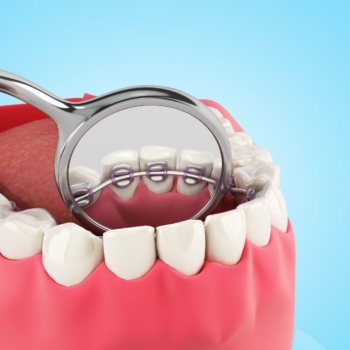What Options Are Available for Someone Who Doesn’t Want Their Braces to Be Visible?

For patients who wish their braces – or any other orthodontic appliance – to be completely invisible during treatment, the only fully discreet option is the lingual technique, which involves placing the brackets on the inner (tongue-side) surfaces of the teeth.
Clear aligners offer a significantly more discreet treatment alternative, though they are not entirely invisible. In many cases, small tooth-colored attachments must be bonded to the front surfaces of the teeth to enhance control and treatment effectiveness. These may slightly affect the aesthetic appearance of the teeth and appliances.
A third aesthetic option is the use of clear or ceramic braces. These are noticeably less visible than metal braces but still not completely hidden.
We are Open Tue-Wed-Fri, 16.00-21.00 but by appointment only.
Call us at +30 210 7253133,
f+30 210 7253143
or mail us at
info[at]DrKonstantinosKontos.gr




Do All Orthodontists Use the Lingual Technique?
The lingual technique is a technically demanding method that requires specialized knowledge and experience. As a result, it is not as commonly used as conventional braces or clear aligners like Invisalign. However, when performed correctly, the lingual technique can achieve treatment results that are comparable to other orthodontic approaches.
Lingual braces are typically more expensive than both conventional braces and clear aligner treatments. They also require a higher level of expertise and specific training, which is why not all orthodontists offer this method. Clear aligners are often preferred over lingual braces because they present fewer technical challenges during treatment.
Is It Possible to Use a Different Technique for the Upper and Lower Jaw?
It is possible to combine techniques, using lingual braces on the upper jaw, where appliances are more visible, and clear aligners or conventional braces on the lower jaw. This hybrid approach can reduce the overall treatment cost, make the appliances more comfortable for the patient (as it preserves more space for the tongue), and result in a more flexible treatment plan.